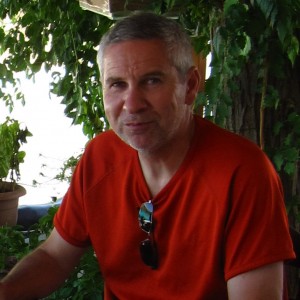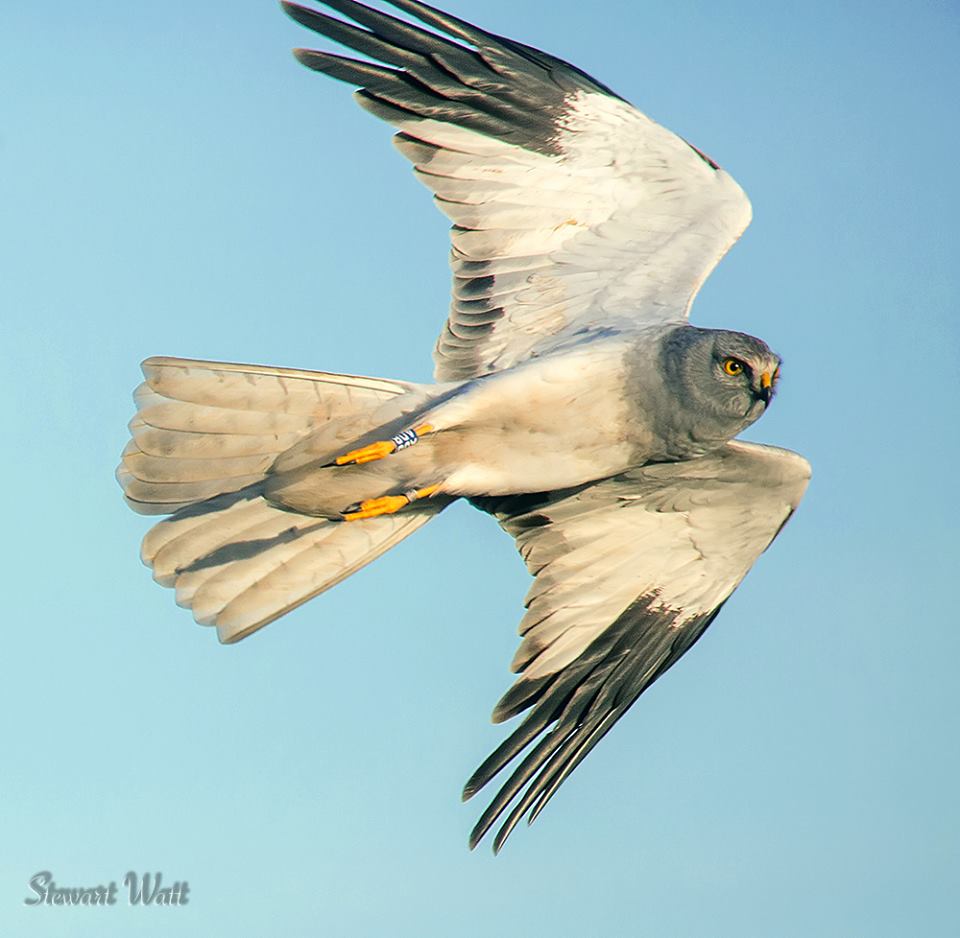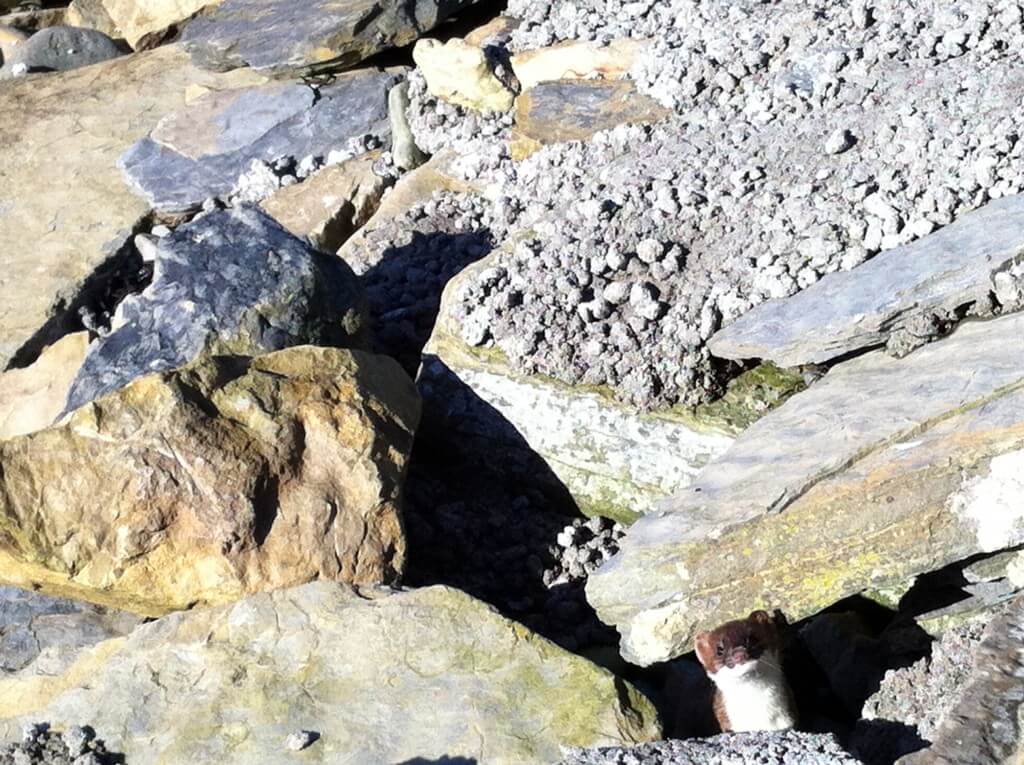 Graeme Walker is a member of the British Dragonfly Society and a lifelong amateur naturalist. Hailing originally from rural north east England, after several decades living in Buckinghamshire, he moved to Orkney in 2013. Graeme is on the committee of the Orkney Field Club and his main interest is Odonata (though that’s not why he moved north!). However, recent events have brought more topical matters from south of the Pentland Firth to his doorstep.
Graeme Walker is a member of the British Dragonfly Society and a lifelong amateur naturalist. Hailing originally from rural north east England, after several decades living in Buckinghamshire, he moved to Orkney in 2013. Graeme is on the committee of the Orkney Field Club and his main interest is Odonata (though that’s not why he moved north!). However, recent events have brought more topical matters from south of the Pentland Firth to his doorstep.
From afar, I have been following, with a great deal of interest, the debate regarding the persecution of Hen harrier Circus cyaneus in the UK. Geography has allowed me little direct involvement, save for online contributions to petitions and thunderclaps, plus the sharing of articles to several Facebook wildlife groups, meaning that the divisive issues affecting Hen harriers have seemed a world away. This is because, fortuitously, I happen to live in a British county that has successful breeding Hen harriers, plus a number that overwinter and I also occasionally see one of these majestic raptors gliding serenely past my lounge window. Some days it’s hard not to be a bit smug. For, as countless media surveys tell us, Orkney is a grand, if windy, place to live. There is some wildfowling in Orkney, but very little grouse shooting and, in recent years, a late summer cull of feral Greylag geese Anser anser (before the wild population arrive for the winter). So, with few threats from the shooting industry, much suitable habitat, a less intensive farming regime, plenty of biodiversity and thriving wildlife tourism, what could possibly go wrong?

Well, in 2010, the first reports of stoats reaching Orkney were received by Scottish Natural Heritage (SNH), though it is not known for sure how the first ones arrived. There are several theories, some more outlandish than others, but the most likely is probably an accidental introduction with a consignment of hay or straw. The Stoat Mustela erminea is a non-native invasive species in Orkney, where the endemic Orkney vole Microtus arvalis orcadensis and many species of ground-nesting birds (waders, raptors and terns) have evolved in the absence of a widespread mammalian predator (less for the feral cat population and some hedgehogs). Without a natural predator to control stoat numbers (e.g. Fox Vulpes vulpes) and habitat that is almost ‘stoatally’ perfect (stone walls and a ditch network), the general prognosis is not good for the Orkney vole.
By their own admission, SNH’s early attempts to stem the manic mustelid tide, using a capture and release scheme staffed by volunteers, was not remotely successful. In fact, during the following few years, the number of sightings increased exponentially, mostly from the road network, which is where the vast majority of human/stoat interactions take place. To date, the sightings are now approaching 500 and most of mainland Orkney is affected. Apparent foot dragging by SNH, or perhaps just a lack of public expectation management, led to the setting up of a local Facebook group, ‘Stoats in Orkney’, where the general public could report sightings of stoats, which were then passed to the SNH office in Kirkwall. In the interests of balance, I can confirm that, following a visit to the SNH office in early 2014, sightings were being logged on an OS map so that hotspots of activity could be detected.

Despite having effectively dropped the small, furry ball, SNH eventually commissioned a report into the scale of the problem, Stoat (Mustela erminea) on the Orkney Islands – assessing the risks to native species, which was published in June 2015. This report concluded that the most likely outcome of the arrival in, and subsequent colonisation of, the archipelago by stoats would result in the population of the endemic Orkney vole falling into a predator pit from which it could not recover. Two consequences of this would be a lack of prey for Hen harriers, Short-eared owls Asio flammeus and Kestrels Falco tinnunculus, as well as the stoats moving onto alternative prey items such as ground-nesting birds, eggs and chicks.
Orkney’s version of a natural history society, the Orkney Field Club (OFC), invited SNH to speak at one of their indoor meetings on 4th November 2015, to shed some light upon the agency’s thinking. In the days preceding this talk, articles about the stoat problem appeared online and in the local Orcadian press. At the OFC meeting, which was well-attended by approximately 60 members and concerned islanders, Graham Neville (SNH Northern Isles Operations Manager) and Rachel Cartwright (SNH Stoat Project Volunteer Co-ordinator) used the opportunity to apologise for previous failings, gave an overview of the 2015 report and called for more volunteers to come forward. Some £500,000 had been made available to fund a new volunteer trapping scheme, which would use lethal traps, with specific training for volunteers and no repeat of the previous stipulation to protect pregnant stoats. The scheme would also be able to provide more data for a further funding bid to secure the finances necessary for a full-scale eradication project, using professional trappers if necessary.
Having reported several sightings myself, each nearer and nearer to my home, I needed no persuasion at all to enroll as a volunteer. I can see how it’s a tricky scenario for a wildlife NGO or government agency, mind. Culling one species to protect others is always going to feel like an own goal, and there’ll be plenty of folk out there who will be eager to point the fickle finger of blame. However, I think the case here in Orkney is a little more straightforward in that the local fauna has not, until very recently, included stoats and so, as evidenced in countless places around the world, a non-native creature will be able to wreak havoc amongst the indigenous wildlife.
The allotted time for the volunteer training came and went, without any contact from SNH, so eventually I called them to find out what was going on. As it happens, the initial training was over-subscribed, and further courses would be run once the first tranche of volunteers had their traps. It would appear, based on this evidence, that communication is still not SNH’s strong suit. Fortunately, whilst typing this article, the latest OFC newsletter arrived, revealing that 54 volunteers have been recruited to the trapping project, with the first 34 now deploying their traps, whilst the remaining 20 volunteers should have their training before Christmas.
Meantime, local folk are keen to keep the pressure on the agency to at least fulfil all the recommendations that were outlined in the 2015 report, if not go further and lobby the Scottish Government for immediate funding for a professional trapping project. The stoat issue is not going to go away on its own, it is only going to become much worse. At present, it is thought (due to lack of sightings) that the outer islands of the Orkney archipelago are unaffected. However, following poor weather throughout the Spring and Summer, this year has seen low crop yields. This means that yet more hay and straw is being shipped from south for over-wintering cattle, with the consequent danger of more accidental introductions if some method of quarantining the shipments cannot be agreed and put in place.
The direct threat to the Orkney vole is very real, and the indirect fallout will affect those species that have evolved to prey upon it. This is a very different Hen harrier problem to the one we have been following in the rest of the UK, it is not about illegal behaviour or vested financial interests. It is solvable, but it needs national and local governments to work together, with wildlife NGO support, along with an informed and galvanised local community. The alternative is unthinkable.
[registration_form]
Good luck, On the bright side mink have been removed from some river valleys round here. At least you have stone walls to attract the stoats, I guess you could equate water courses to stone walls so there is a chance. One heck of an effort for you though.
It will be tragic if the unique environment of Orkney was destroyed by the invasion of stoat and the tardiness of SNH in dealing with the issue. It will not be easy but I fervently hope the problem is solved. If and when that is finally achieved, tight and permanent controls on hay shipments etc will be vital to prevent a recurrence. I hope SNH haven’t forgotten this either.
Surely we are playing an extremely dangerous game here in a potentially very serious situation? Would it not make much more sense to draw up a proper plan of action as soon as possible and employ professional trappers?
Agreed, this is no time to be pussy-footing around. However, one obvious point was not mentioned in the blog: what steps are being taken to prevent this happening again, and again and….
Strangely enough it’s believed that the hazel dormouse of all things has reached Ireland by sneaking into hay brought over with race horses from France. Sadly the dormouse is regarded as an innocuous even welcome to Ireland’s fauna, but the stoat on Orkney is a very different story. Island groups like Orkney, Shetland, parts of the Hebrides etc that are pretty much devoid of four footed terrestrial predators (at a bit of a stretch you could say the otter is one) must play a crucial role in maintaining the populations of some ground nesting birds, helping to repopulate and maintain areas where they have to contend with foxes, stoats, hedgehogs etc. The problem isn’t truly natural predation on the mainland, but loss of naturally safer sites on island groups IMHO. The conservation NGOs should be making more of this to counter arguments for the near industrial slaughter of ‘vermin’ by some of the gamekeeping fraternity on the mainland and greater efforts to keep terrestrial predators from places they were never meant to be. SNH is truly appalling, action held up to do research, there are times when it’s common sense you need pure and simple. It needs its arse kicked over this and this won’t be the last time this happens, so a proper strategy needs to be developed to deal with this in the future. Fingers crossed the Orkney vole will survive, but thus won’t help it or the ground nesters.
Tell them it’ll damage the tourist trade. That’ll get them moving – threats to the economy & tax receipts always gets people’s attention.
What’s to stop landowners getting the appropriate trap(s) and getting on with it themselves. Why does the organ of the State have to do it and why do we have to wait for the Organ of the State to decide that is what is to be done. I thought island folk were strongly independently minded.
We’ve got Citizen Science, where’s the Citizen Action – get together and Just Do It.
There’s plenty of guidance and advice out there on how to set up tunnel traps legally, and as far as I know, unlike snares there is no mandatory tagging of traps or need for user approval.
PS Keep your fingers out of the way though!
Anyone else see the irony of killing lots of stoats to achieve the objective we want?
I know, I know. But still…
Think the poor maligned Stoat a sorry innocent in this case.
Doubt it arrived in the manner described,that is just pussyfooting around giving a false reason that suits everyone.
Much more likely a deliberate release of some Stoats for whatever reason,never heard of Stoats going in hay or straw,they always seem to go in rocks,walls or woodpiles etc.
The stoats are innocent whichever way they got there. They certainly never planned it. The problem remains, though, about what to do now its happened.
Your first 2 sentences, Jonathan – totally agree.
There is far too much demonising of creatures often introduced by humans for their own reasons, and then persecuted when they decide they were wrong.
If the stoats arrived under their own steam, they appear to be undesirable migrants. We can’t have that!
Not so much hay bail as hayseed.
Thanks for posting this Graeme. There is now some doubt as to whether SNH has actually got £500,000 available this F/Y which I will attempt to clarify next week in a meeting with SNH & Liam McArthur MSP. If anyone wishes independent expert advice on the impact of stoats in Orkney see the following report: http://www.snh.org.uk/pdfs/publications/commissioned_reports/871.pdf
The Orkney Tourism Group has also sent a letter this week to SNH emphasising the importance of birds and wildlife to the Orkney economy.
We need to keep the pressure on for immediate and professional trapping (as the independent report says….)
The biggest problem with this is the ‘killing’ culture can take over. A classic example is the grey squirrel now absorbing £million. So when a young female Goshawk dies of lack of food last week in a wood where grey squirrels are removed whose fault is it!
Let me save you some breath Steve. £500,000 is the estimated cost of eradication, not the budget for the volunteer trapping programme, so it isn’t available this year and never was.